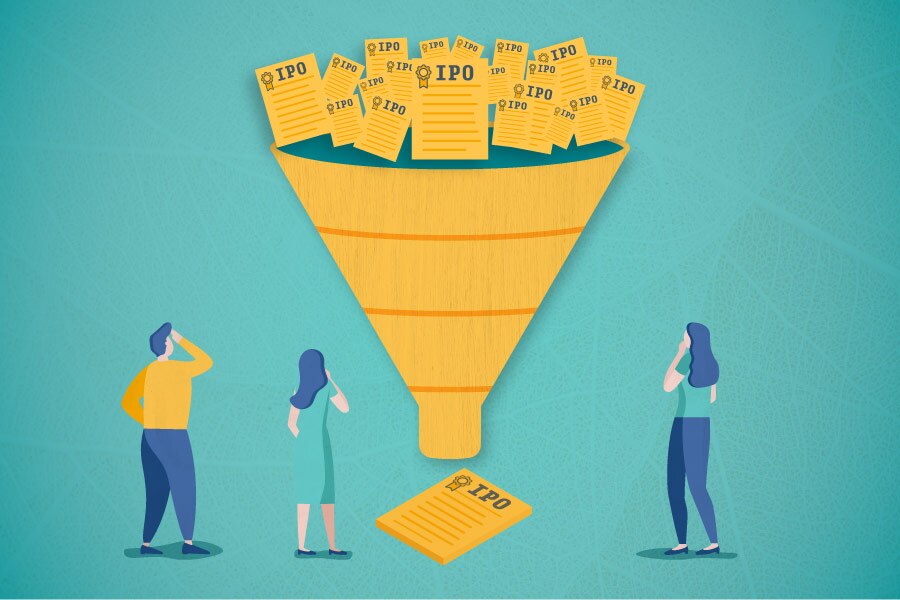IPO Basics: What to Know Before Investing

Stock markets with positive momentum can attract initial public offerings (IPOs) and plenty of hype. Like most new opportunities, it can be easy to get caught up in the excitement, and IPOs are no exception.
When it comes to investing in IPOs, investors should consider keeping a cautious outlook. Many times in recent years, an IPO with a lot of publicity and hype cratered soon after its opening day. Sometimes investors confuse a company's brand with its business operations. In other words, you may love the product, but that doesn't necessarily mean you have to love the stock too.
One potential problem with IPOs is that many investors might rush in. It might be worth waiting to see how the newly issued IPO shares perform in the market. Or, if you do jump on an IPO, you might want to consider buying shares in small quantities over time rather than going all in at once. People can be excited to invest in these companies, but it's good to keep the potential downside in mind.
When considering a purchase in the secondary market, investors should have a risk management plan in place that states timeframe, entry, take profit, and stop-loss targets, and so on to help keep a cool head, even in unpredictable markets.
Just as with any other investment, it's important to do your own homework, so let's review a few IPO basics—that way education, not hype, drives your decision-making.
The basics of IPOs
Why do private companies go public? There's a variety of reasons. They could be trying to maximize shareholder value, raise capital to invest in the business, or use the shares as currency for a merger or acquisition. IPOs are also one of many ways venture capital and private equity investors cash out their stakes in a company.
The number of companies filing to go public tends to accelerate during strong markets, but there are many factors that go into a company's decision about when, and if, it will file to go public.
What drives demand in an IPO?
So just what makes for an in-demand IPO? The answer to that question is highly subjective and difficult to determine before the stock actually starts trading. That's because a company filing to go public may be an unknown entity. Sure, a company must file a prospectus with securities regulators and supply investors with financial information before listing, but without any trading history on public markets or lengthy historical financial results, determining an IPO's prospects is rarely an easy task. Still, there are a few places to turn for more information.
Consider analyzing publicly traded competitors and how those shares are performing. If stocks of companies in the same industry are trending higher, it could suggest the IPO might do well. It's also possible these companies are already entrenched in their respective sectors and a newcomer could struggle to be successful. Conversely, if competing stocks are in a bear market, then the IPO could decline with the rest of the sector.
Debut time: The first day of trading
One of the most important aspects of an IPO is the opening price—where the stock begins its exchange-listed life on its first day of trading.
Accurately pricing an IPO is a challenge even for investment banks that have been doing this work for years. Naturally, the company holding the IPO wants a high price, while investors prefer something lower. It's up to the banks to find the middle ground. Sometimes they nail it; sometimes they miss badly.
Generally, a stock that falls below its opening level may require further "price discovery," meaning it could drop further until it reaches a point where it's considered fairly valued. Alternatively, when a stock jumps above its opening price, it's sometimes perceived as a bullish sign that investors want more and are willing to pay.
Waiting until the stock starts trading
In many cases, it may be beneficial for the investor to wait until after a stock starts trading—in other words, let the dust settle. However, an investor must consider that the more demand there is for the IPO, the scarcer those shares will be, so it's important for an investor to weigh the pros and cons of their decision.
Once a stock is public, it's out in the market spotlight with its peers. The days, weeks, and months following an IPO will typically reveal whether it was priced well and what kind of growth prospects might lie ahead.
Some simple trading logic can be built around an IPO. Investors might consider simply waiting for a day, a few days, or longer after an IPO starts trading on the open market. They can then determine potential entry and exit points based on their observations and understanding of technical analysis as well as what's appropriate for their own risk tolerance.